[ad_1]
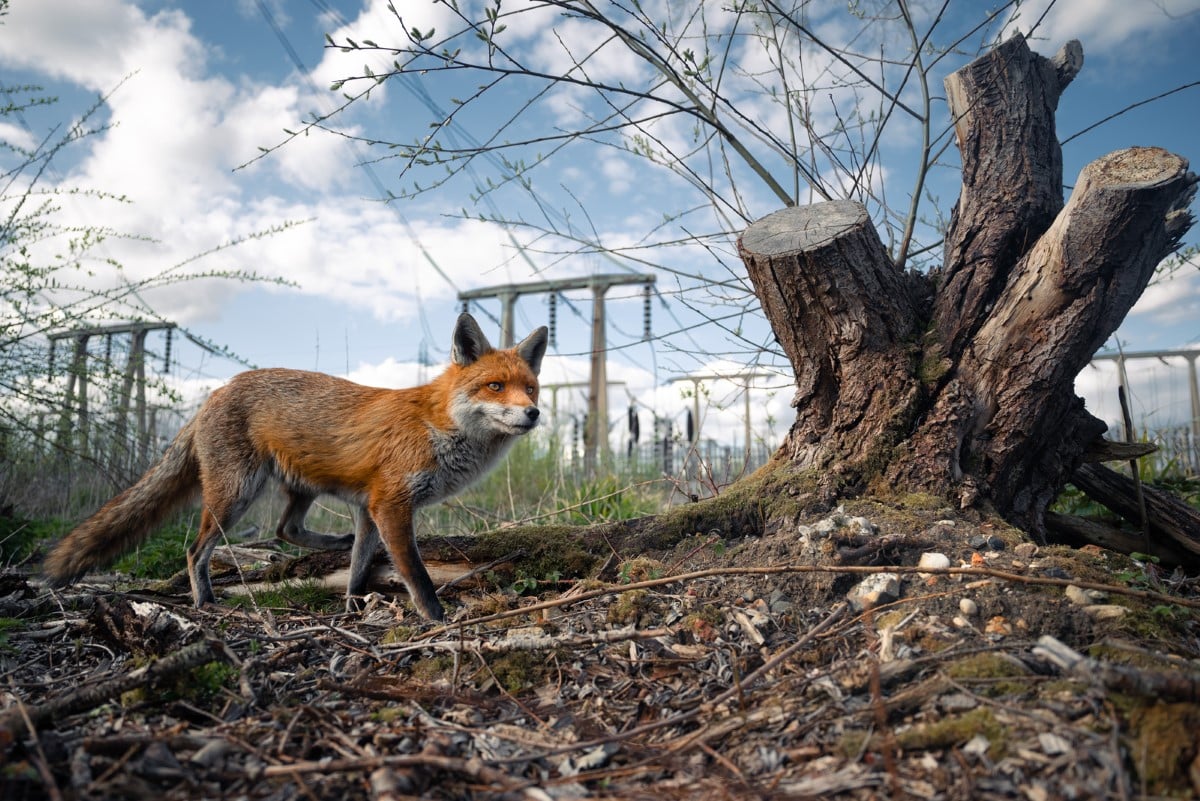
“A Look to the Future…” by Charlie Page. British Wildlife Photographer of the Year 2023 and Urban Wildlife | Winner.
Animal: Red fox (Vulpes vulpes)
Location: Lee Valley Park, England
“I knew this area was reliable for foxes, and I wanted a shot with the industrial backdrop. One day when setting up my camera with a remote shutter release, a fox approached from my left. Hesitant about what to do, I stayed still, and surprisingly the fox stopped right in my frame. I took the shot but was confused why it had come so close. In hindsight, this encounter probably tells the story more than the photo itself. Wildlife has become used to us encroaching on them. I think the felled tree and longing look on the fox’s face portray this tragedy perfectly. I hope that all wildlife photography doesn’t look like this in years to come.”
Amateur and professional photographers celebrated the United Kingdom’s incredible wildlife in the British Wildlife Photography Awards (BWPA). Over 13,000 photographs were submitted, which were then narrowed down to an impressive group of winners.
In the adult competition, Charlie Page was named the overall winner after his image of a red fox juxtaposed against an industrial background was judged the best in the competition. Page’s evocative photo also won the Urban Wildlife category.
“I knew this area was frequented by foxes, and I wanted to take an image with the industrial backdrop to show the devastation caused to this local woodland that the fox calls home,” shared Page. “I hope that wildlife photographers aren’t faced with similar scenes in years to come.”
The youth competition, which has three age categories, was won by Billy Evans-Freke for his charming image of a tawny owlet resting in a tree. For his efforts, he was named RSPB Young British Wildlife Photographer of the Year 2023.
The other winners also submitted impressive work showing the rich variety of wildlife across the UK. From carnivorous plants to small insects to underwater creatures, the species represented are a testament to Britain’s natural patrimony.
“The talented photographers in this year’s competition have given us an exceptional window into Britain’s nature,” says Will Nicholls, Director of BWPA. “It’s an important reminder of the wildlife and wild spaces that still remain in the UK, and are in need of our care and protection.”
All of the winners’ photographs will now be published in a hardcover coffee-table book with a foreword by Dame Judi Dench. The book is available for purchase on the BWPA website.
For those interested in entering the next contest, the 2024 competition is now taking entries.
Here are the winners of the 2023 British Wildlife Photography Awards.
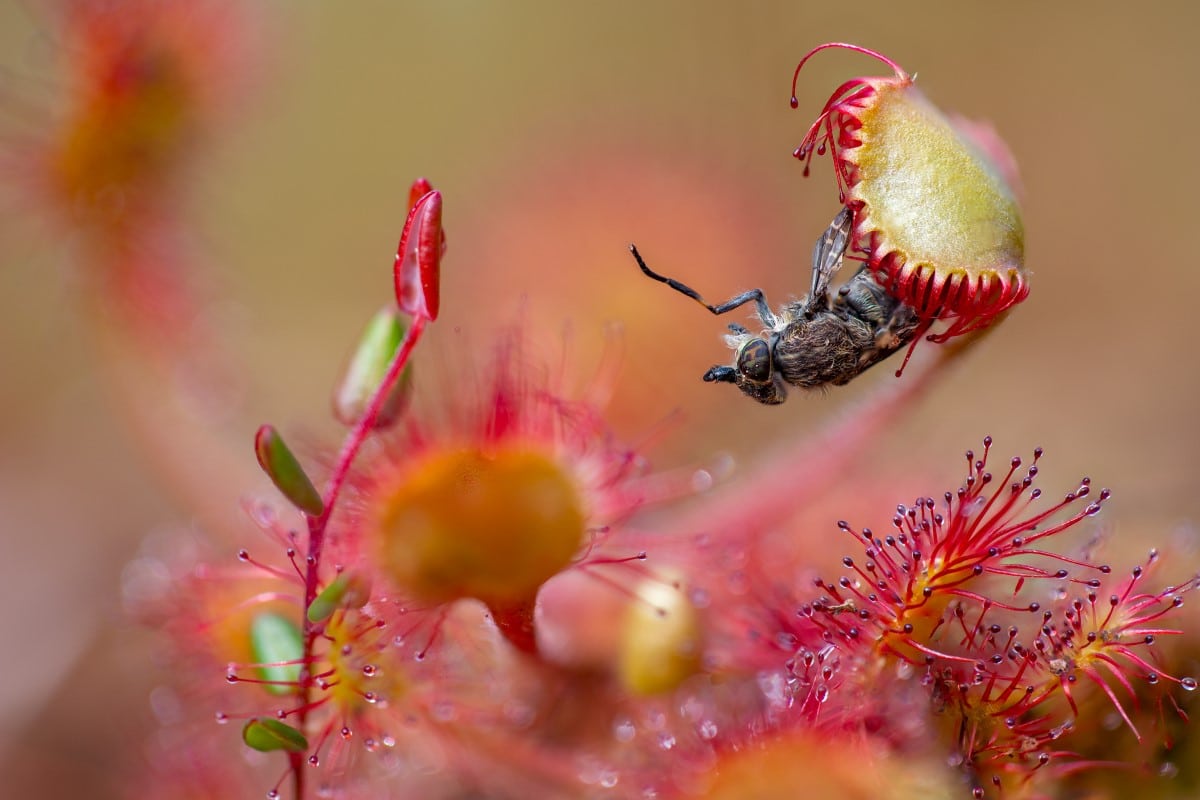

“A Poet’s Lunch” by Matt Doogue. Botanical Britain | Winner.
Species: Sundew (Drosera rotundifolia) and Horsefly (Haematopota sp.)
Location: Devilla Forest, Scotland
“A 4:30 am alarm to get to Devilla Forest for some early morning butterflies resulted in me finding my first ever Sundew. It was even better that it had prey! Then, when I discovered it had actually snared a horsefly, I was extremely excited. There’s something poetic about the piece: the horsefly, known for biting us, was ‘bitten’ by the Sundew. This is a handheld, stacked image consisting of thirty images to ensure complete focus of the scene.”
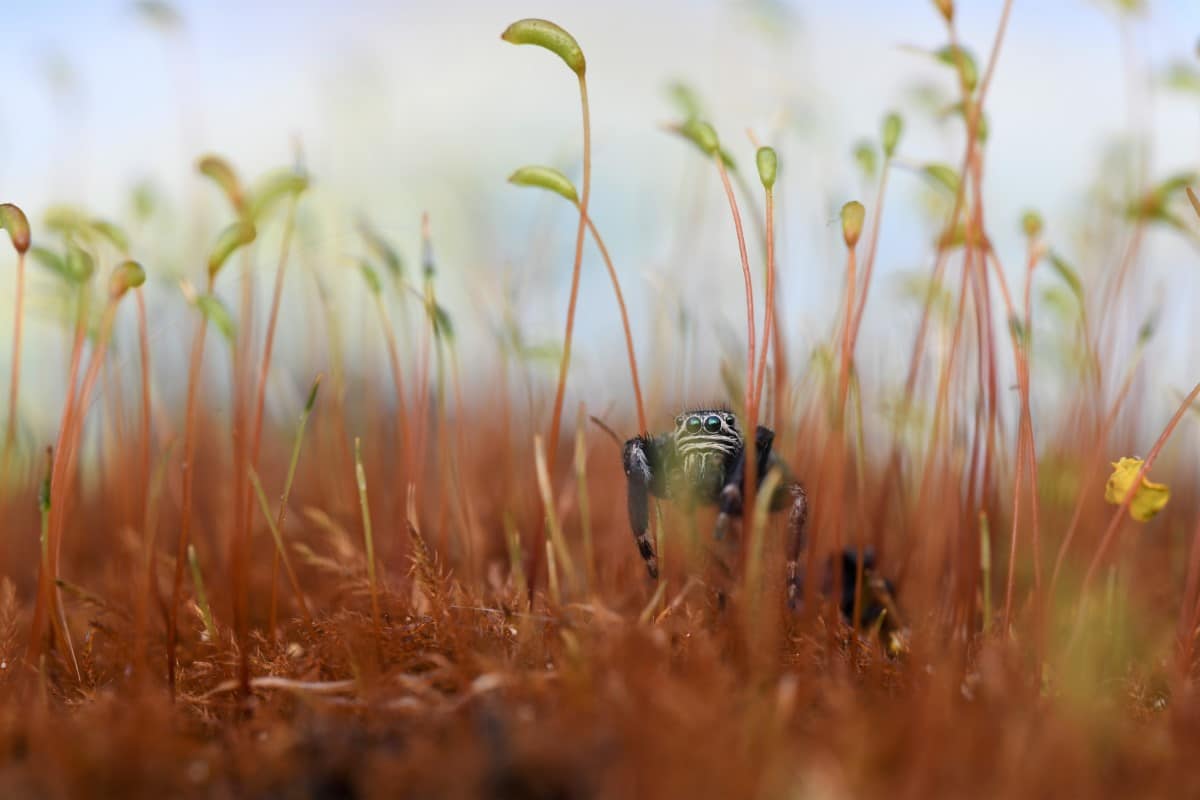

“Metallic Jumping Spider in Moss” by Will Atkins. Hidden Britain | Runner-up.
Animal: Jumping spider (Evarcha arcuata)
Location: Purbeck, Dorset, England
“The metallic jumping spider is a heathland specialist, hunting its prey in the heather jungle of its environment. The tiny moss plants tower above the spider in this photo, emphasizing the small physical size of the spider, though—like all ‘jumpers’, with their big central pair of eyes and innate curiosity—they are big in terms of character! Like a lot of macro work in the field, I was on my belly to get the animal’s perspective, but it was worth it for the ‘eyeball-to-eyeballs’ view.”
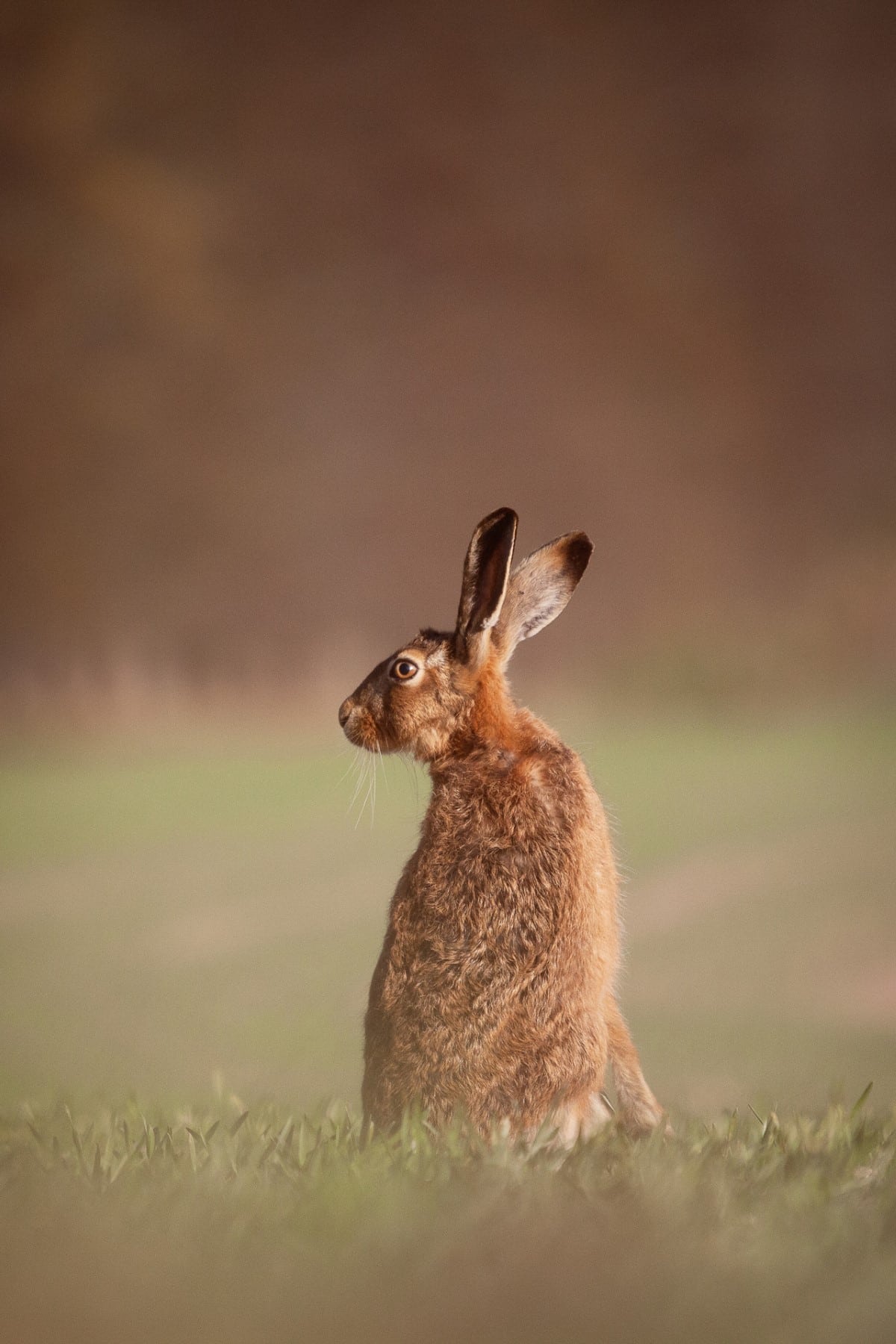

“What’s Over There?” by Felix Walker-Nix. 12-14 years | Winner.
Animal: Brown hare (Lepus europaeus)
Location: Winchester, England
“I love hares, they are easily one of my favorite animals. I made it my challenge to get a portrait of a hare and see them box. I had spent a lot of time out in the fields watching different individual groups, learning about their behavior. One afternoon, I went to my best spot and waited. I spotted the hares boxing on the other side of the valley, then this one came to the field margin to rest. Later, he came out to eat the young barley, then looked over his shoulder towards me and I got this shot!”
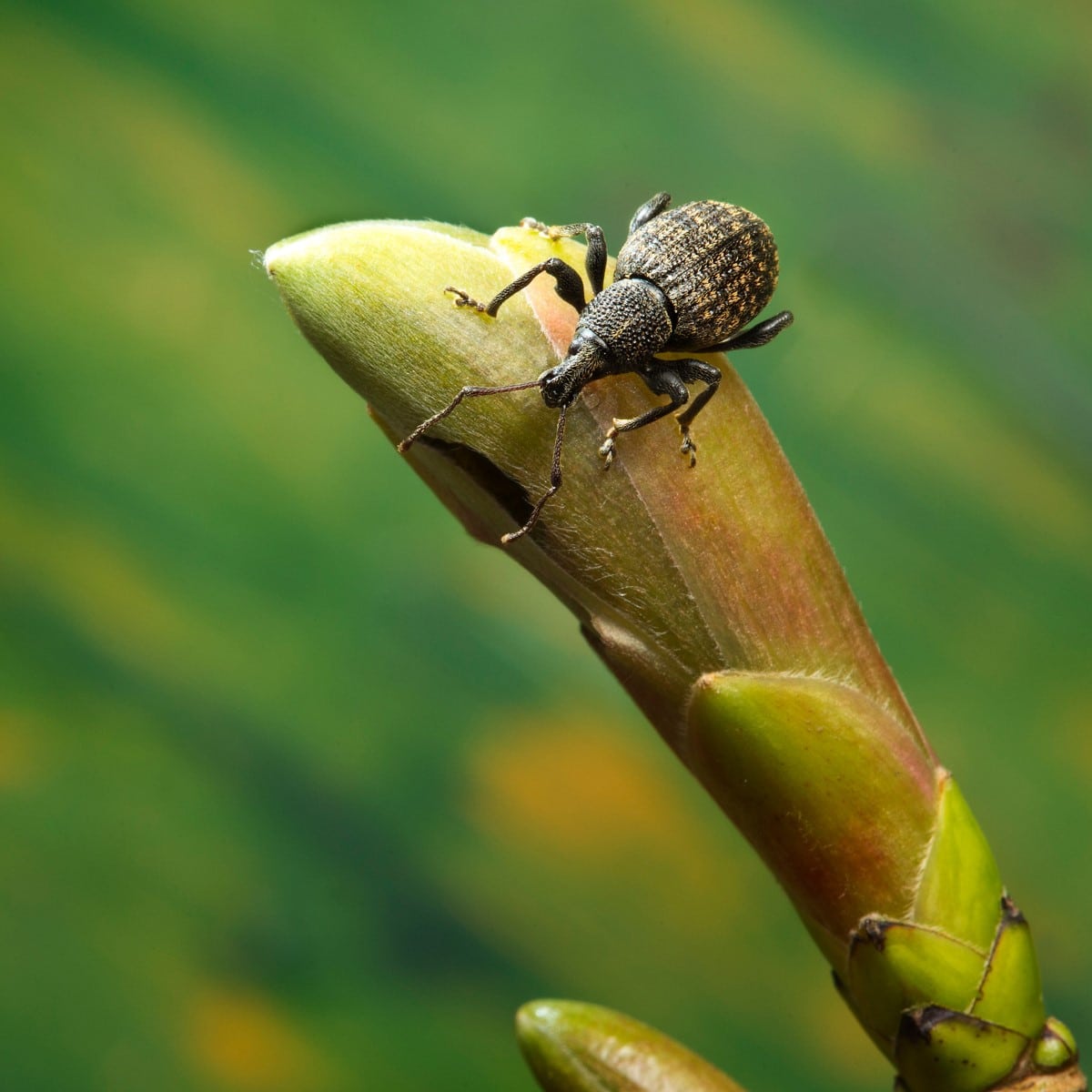

“Vine Weevil” by Wilbur King. 11 and under | Winner.
Animal: Black vine weevil (Otiorhynchus sulcatus)
Location: Devon, England
“When I was staying at my nanny and grandad’s house I kept finding vine weevils coming from a pot plant. Grandad helped me set up the camera and flash so I could take this photo.”
The winners were culled from the more than 13,000 photographs that were submitted.
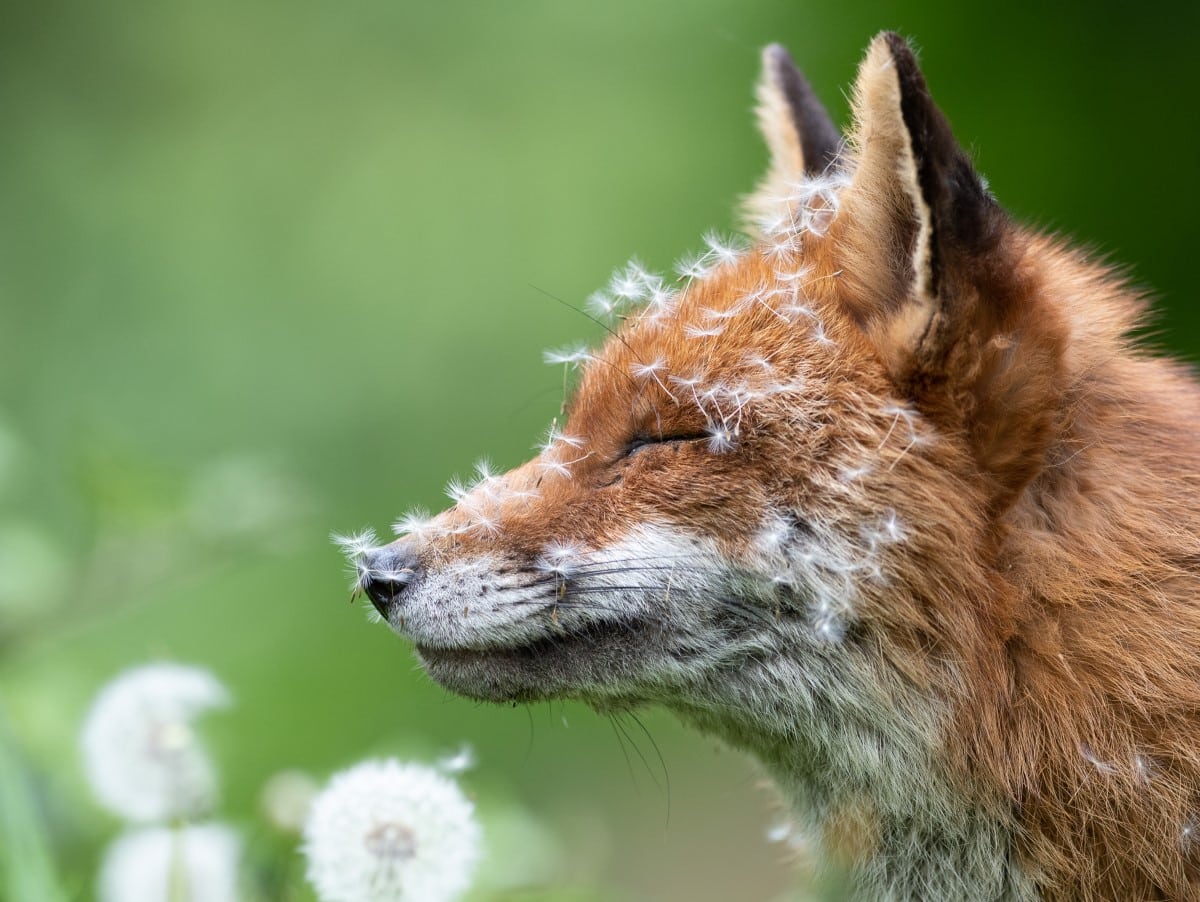

“Sleeping With Dandelions” by Lewis Newman. Animal Portraits | Winner.
Animal: Red fox (Vulpes vulpes)
Location: London, England
“After spending a lot of time with this particular vixen, she began to learn I was not a threat. This gave me some great photographic opportunities. I got to know her routine, and as the wildflowers began to grow, I would find her curled up amongst them. As the dandelions began to open there were a couple of days when she would wake up covered in them. Although she got used to my presence if I were to move too fast or drop anything she would immediately leave. Later on in spring, I was blessed with her bringing her cubs to me, and have watched them grow ever since.”
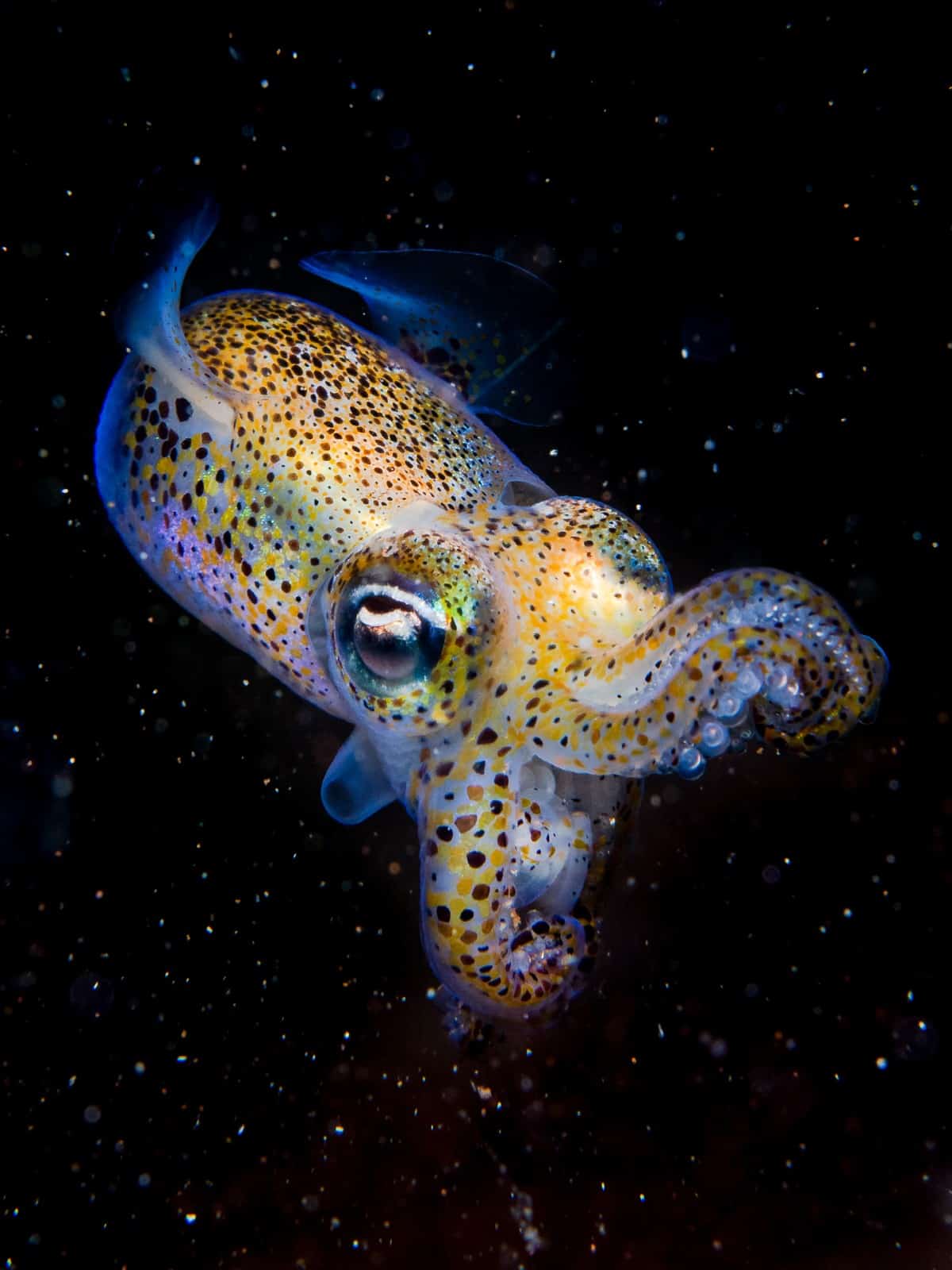

“Alien Bobtail” by Kirsty Andrews. Coast & Marine | Runner-up.
Animal: Bobtail squid (Sepiola atlantica)
Location: Under Paignton Pier, Devon, England
“Taking photos underwater at night, it is possible to see a range of species not always visible during the day. Bobtail squid are out hunting at night and their stunning neon colors catch my torch and strobe lights. They often patrol over sand patches hunting for prey, such as tiny shrimp. In this case, there was a lot of sand suspended in the water, but rather than trying to remove the sand from the shot I felt it added to an otherworldly atmosphere.”
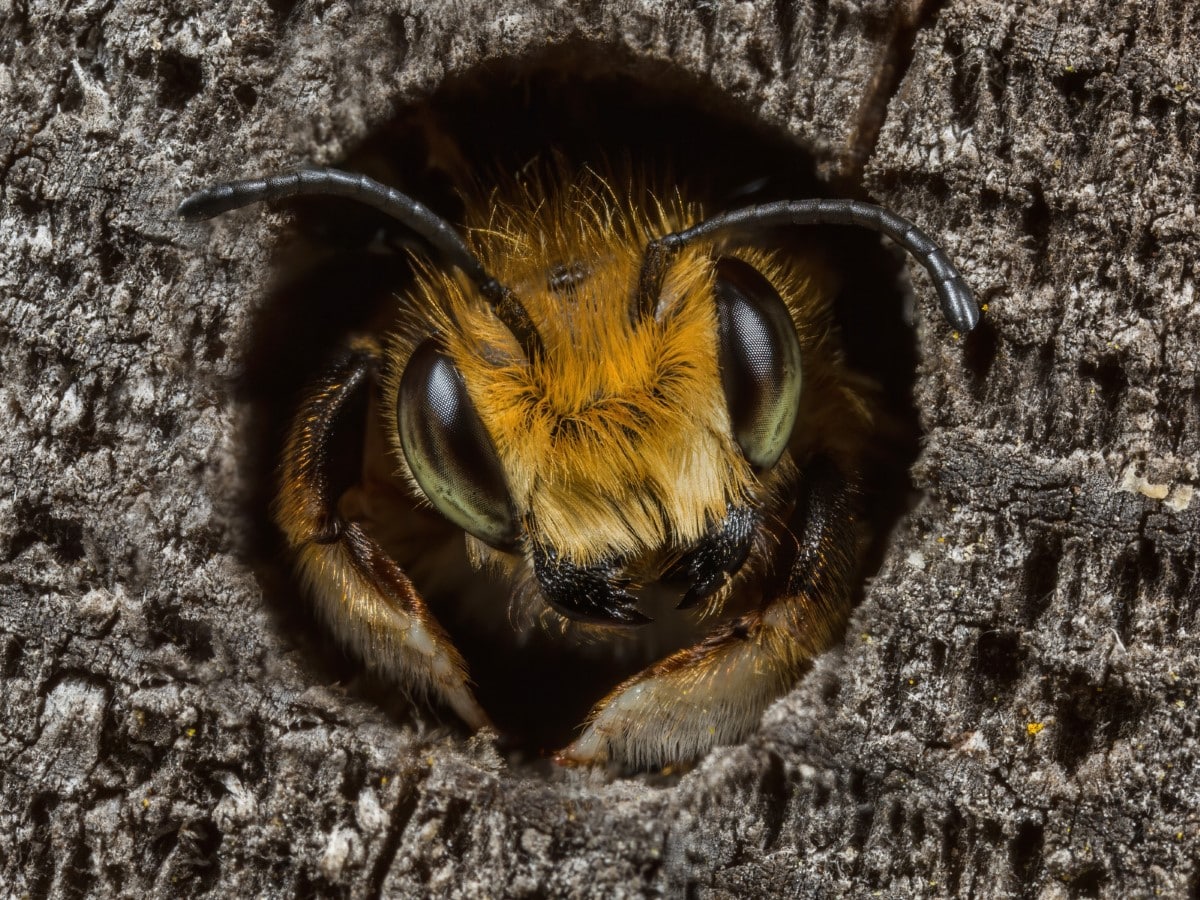

“Willoughby’s Leafcutter Bee” by Ed Phillips. Animal Portraits | Runner-up.
Animal: Willoughby leafcutter bee (Megachile willughbiella)
Location: Staffordshire, England
“I have a particular interest in the UK’s solitary bees and like to photograph the species that visit our Staffordshire garden. I had seen this male Willoughby’s leafcutter bee looking out of a hole, but it kept retreating whenever I approached. They often pause to warm up at the entrance before flying off, so I waited, camera poised for the right moment. It eventually reappeared, and I carefully framed the shot. At the last moment, it cocked its head to one side to what I felt was a pleasing angle.”
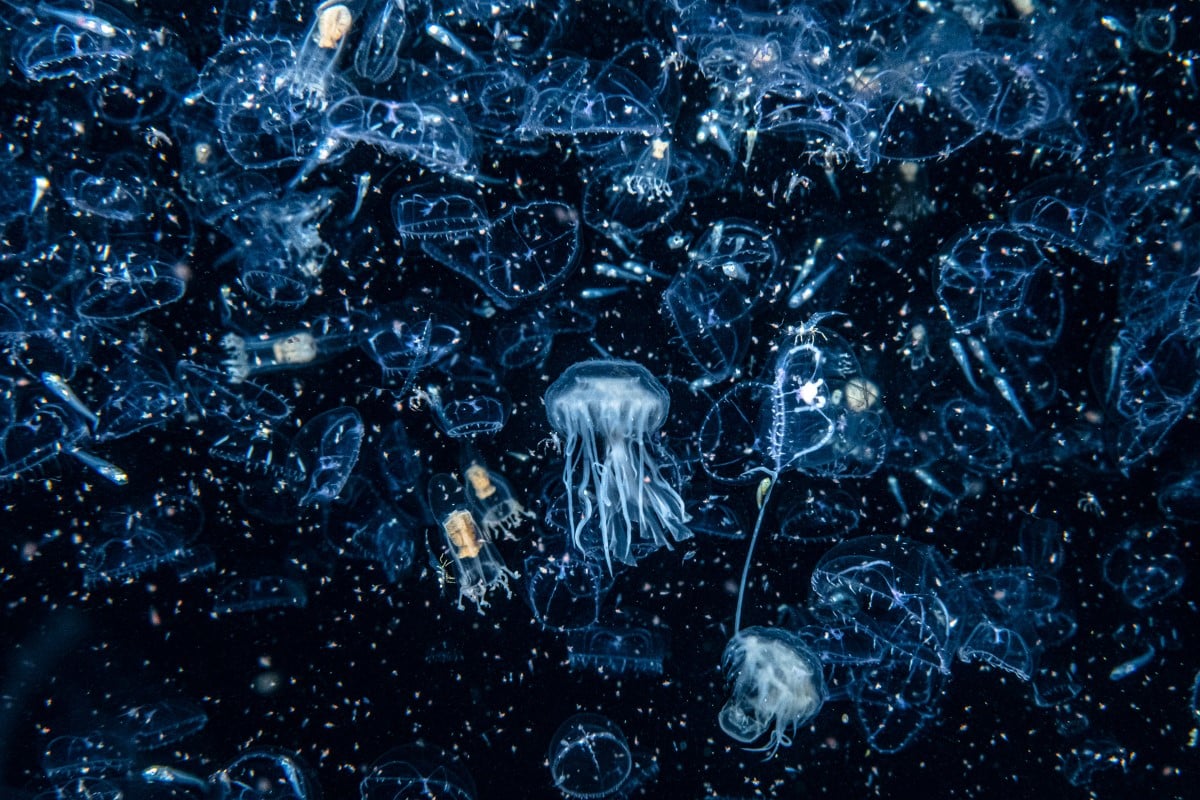

“Welcome to the Zoo (plankton)” by Henley Spiers. Coast & Marine | Winner
Animal: Jellyfish (Clytia sp. and Neoturris sp.)
Location: Shetland, Scotland
“One night in Shetland, I came face to face with plankton on a scale, unlike anything I had experienced before, snorkeling amidst a plankton bloom so thick that, at times, I was unable to see through it. To the naked eye, it looks like a million peach-colored spheres, as if the contents of a bean bag had spilled over the sea, but my macro lens reveals a mass of tiny organisms. Plankton takes two forms: the first is phytoplankton, which is made up of plants and forms the base of the food chain. Zooplankton, made up of animals, sits on the next rung up. I am in the midst of the zoo here—a rich tapestry of tiny animals pulsating all around. Some are too microscopic to recognize, but others I can discern. Larval-stage crustaceans abound, some swimming through the darkness, others clinging to the life rafts offered by broken-off seaweed. This plankton soup has attracted an army of jellyfish, who feast upon the buffet of miniature life.”
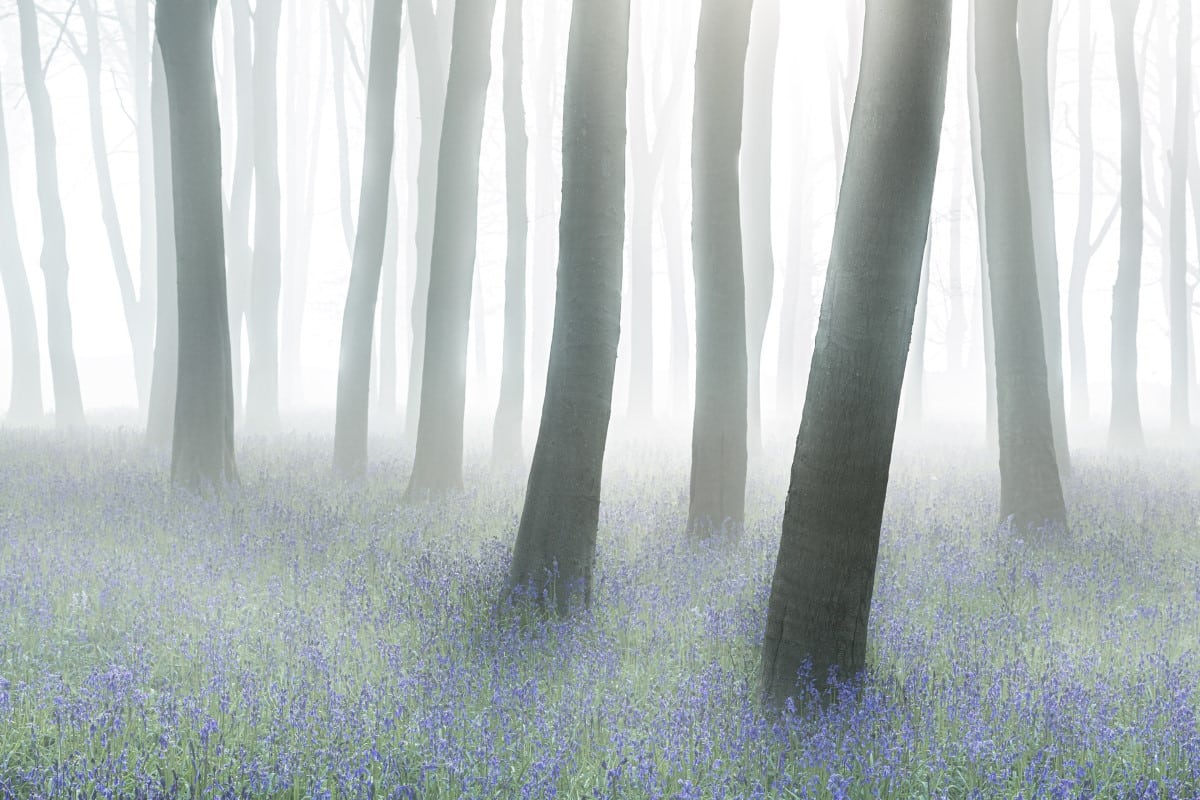

“Mystical Forest” by Philip Selby. Wild Woods | Winner.
Species: Beech (Fagus sylvatica)
Subject: Badbury Hill, Oxfordshire, England
“On the remains of an Iron Age hill fort on Badbury Hill in Oxfordshire, Badbury Clump is an area of wonderful beech woodland, carpeted in bluebells each spring. On this particular morning, a thick fog had descended, creating a magical, ethereal atmosphere, and it was a wonderful experience to be present in the woods with the camera in hand. Shooting into the light, I was struck by the sense of endlessness as the beech trees eerily dissolved into the silent, misty obscurity.”
The photos are a celebration of the United Kingdom’s rich natural environment.
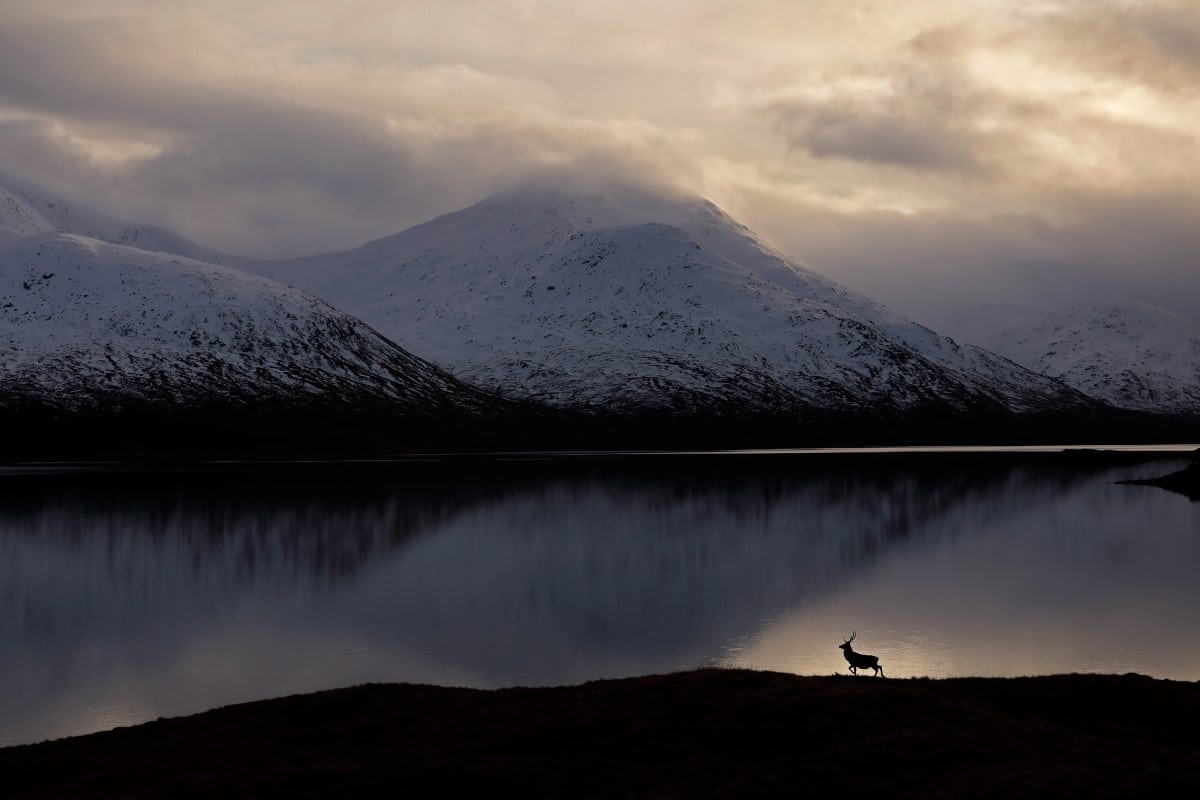

“Stag by the Loch Side” by Neil McIntyre. Habitat | Winner
Animal: Red deer (Cervus elaphus)
Location: Western Highlands, Scotland
“This stunning location is one I visit frequently with the very hope that I might get opportunities just like this. It’s a wide glen with a loch, spectacular mountain backdrops and, of course, the resident deer. On this occasion, I noticed this stag moving along the side of the loch, but I wanted him against a bright patch in the scene. There was just such an area, albeit very small, and he was heading in that direction. I moved into position and waited until he made his way along the ridge; sure enough, he walked right through the light patch.”
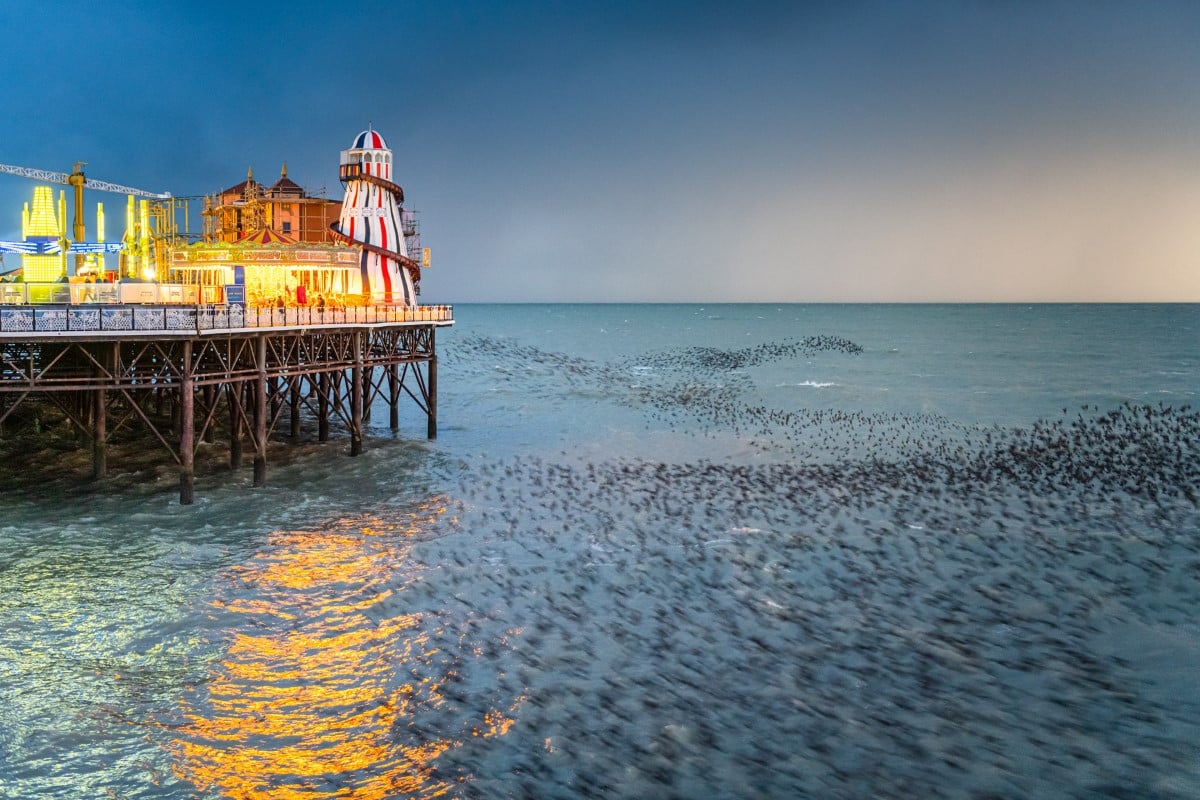

“Helter Skelter” by Matthew Cattell. Urban Wildlife | Runner-up.
Animal: Starling (Sturnus vulgaris)
Location: Brighton, England
“Every night during the winter, Brighton plays host to a spectacular murmuration of starlings. On this particular evening, an approaching storm was illuminating the horizon, and as the light levels dropped, the brightness of the sky balanced with the lights on the Palace Pier. I switched to a wide angle lens, intending to include the helter-skelter and its reflection in my photograph, and waited. As the starlings arrived to roost, they swept across the sea, producing graceful, elegant curves across my viewfinder. I particularly love the shape of their movement in this photograph.”
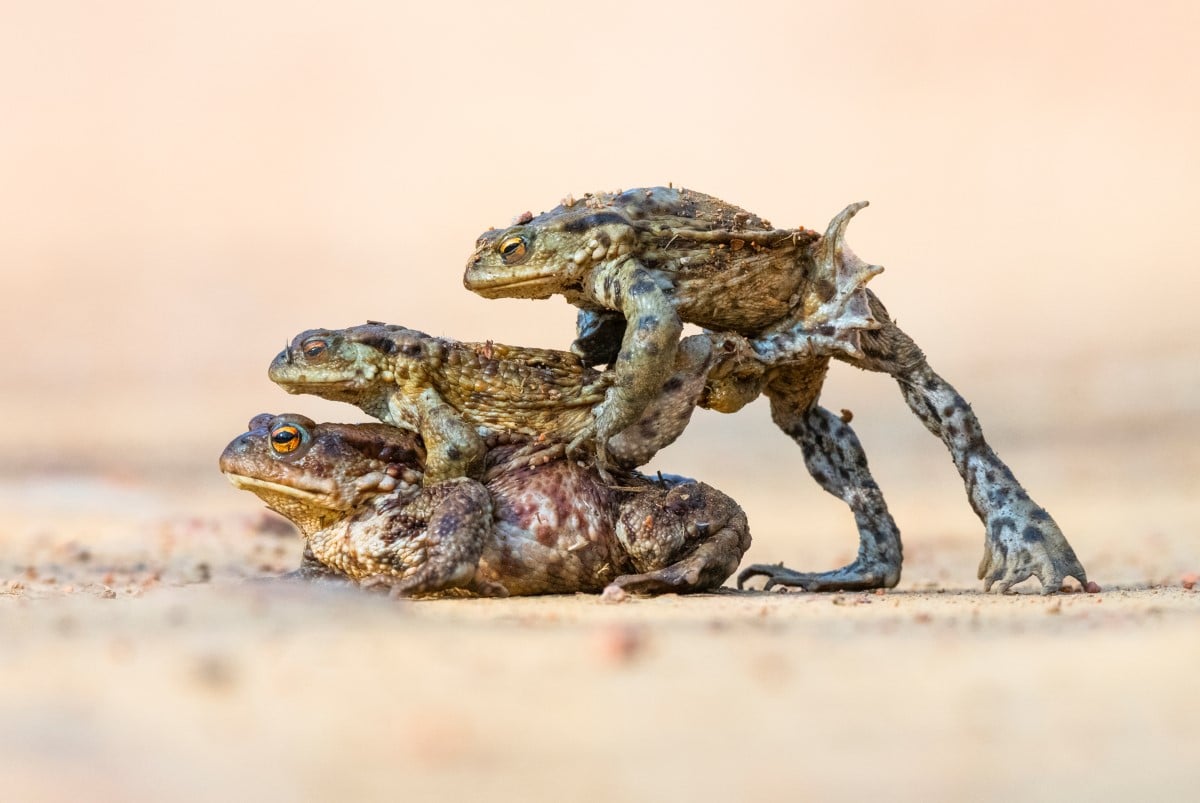

“Hitching a Lift” by James Roddie. Animal Behavior | Winner.
Animal: Common toad (Bufo bufo)
Location: Cromarty, Scotland
“The common toad migration to their spawning grounds can be a spectacular event to watch. As the large females make their way to the water, the smaller males approach them to try and ‘hitch a lift’. It can result in some amusing behavior, as multiple males will often try to mount the same female. This image was captured just as one of the males tried to push away another. It can be quite a difficult thing to photograph, as this is one situation when toads move surprisingly quickly.”
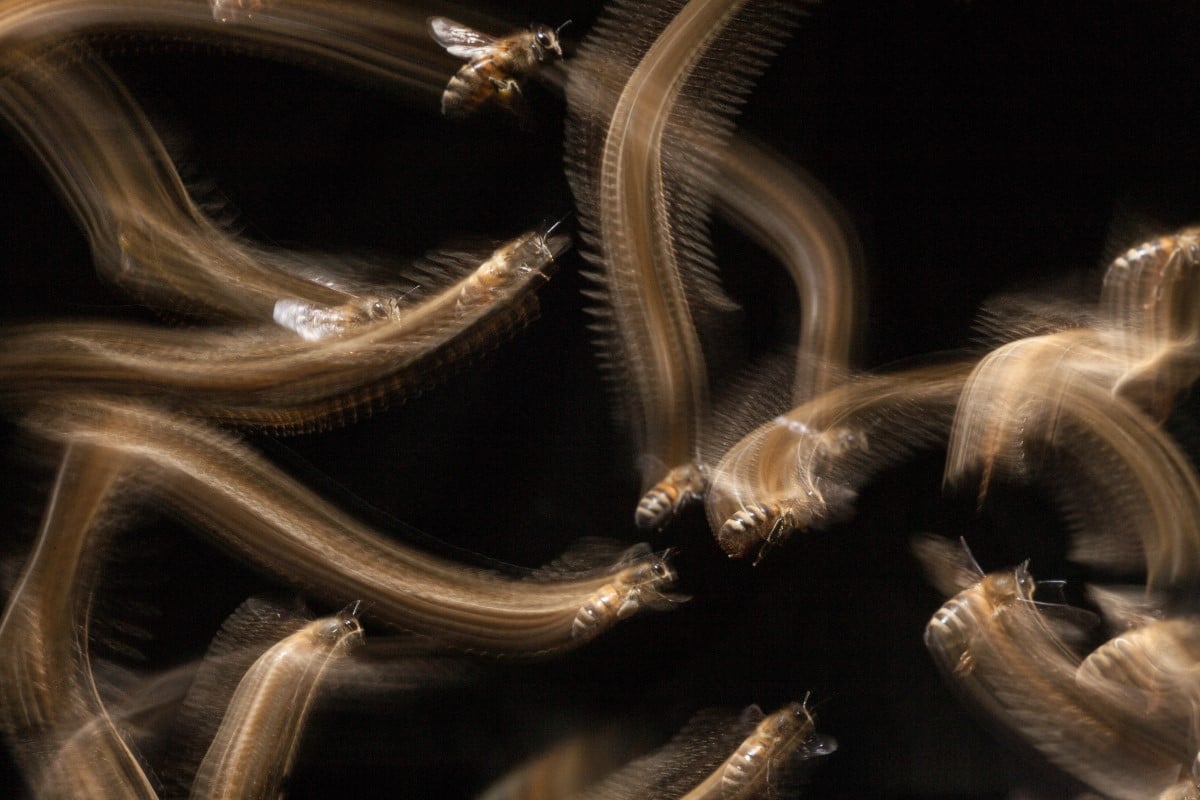

“Honey Bee Flight Trail” by John Waters.
Hidden Britain | Winner.
Animal: Western honey bee (Apis mellifera)
Location: Bristol, England
“Honey bees leave ‘light trails’ as they approach their hive entrance. This shot was taken in a small wildlife-friendly garden in Bristol where my partner keeps bees. I spent hours watching the bees, trying to work out how I could show their comings and goings in a way that would convey a sense of movement—their ‘busyness’. I used a slow shutter speed (0.3 secs) and second-curtain flash to ‘freeze’ the bees after they had made their light trails.”
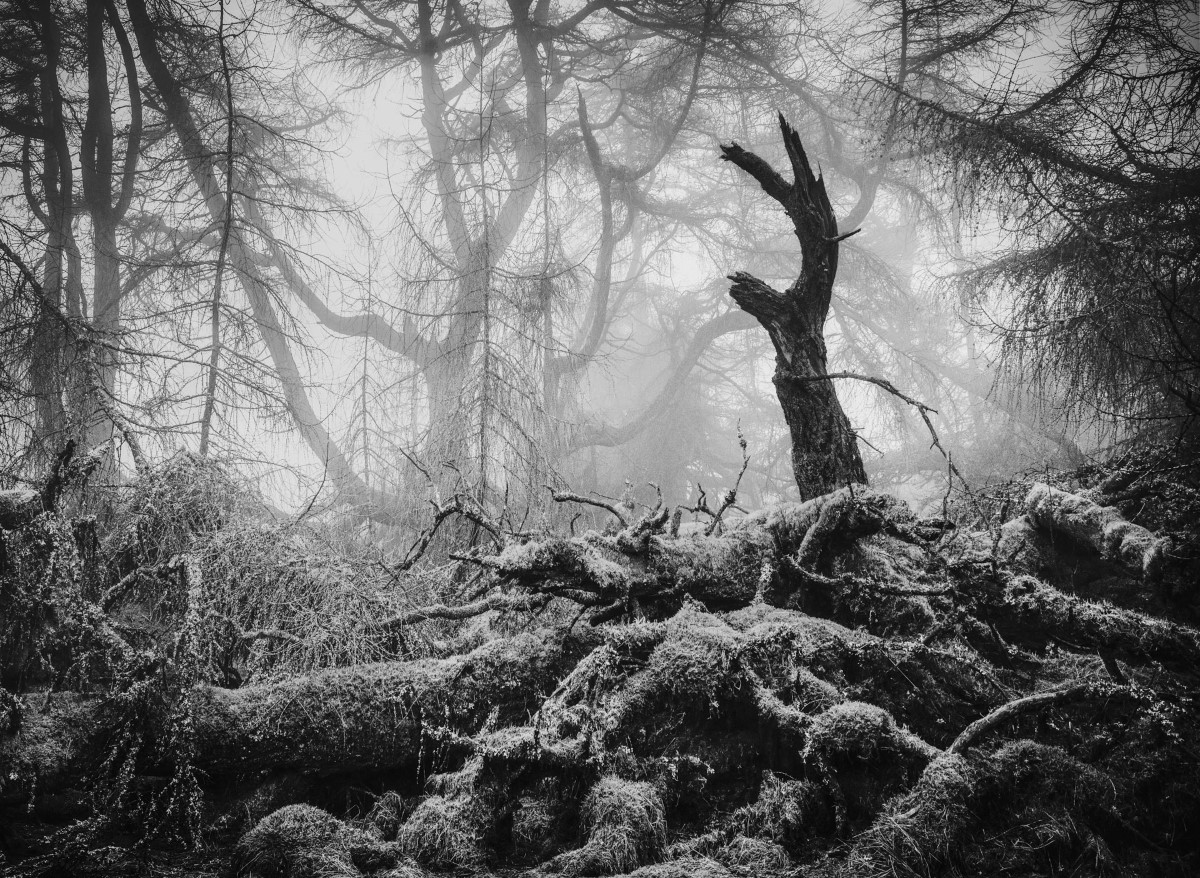

“Great Mell Fell” by Matthew Turner. Black & White | Winner.
Location: Great Mell Fell, Lake District, England
“I spent a good few hours on this foggy morning exploring the wooded eastern contours of Great Mell Fell in the Lake District. This is a strange and otherworldly place, with gnarled bark, distorted branches, and dank moss everywhere. I clambered through the jumble of fallen trees and eventually stumbled upon this decaying specimen, which to me looked like a claw reaching out from the decomposing pile of tree carcasses beneath. I used my tripod to avoid any camera shake due to the dark and dingy conditions which suited the scene perfectly.”
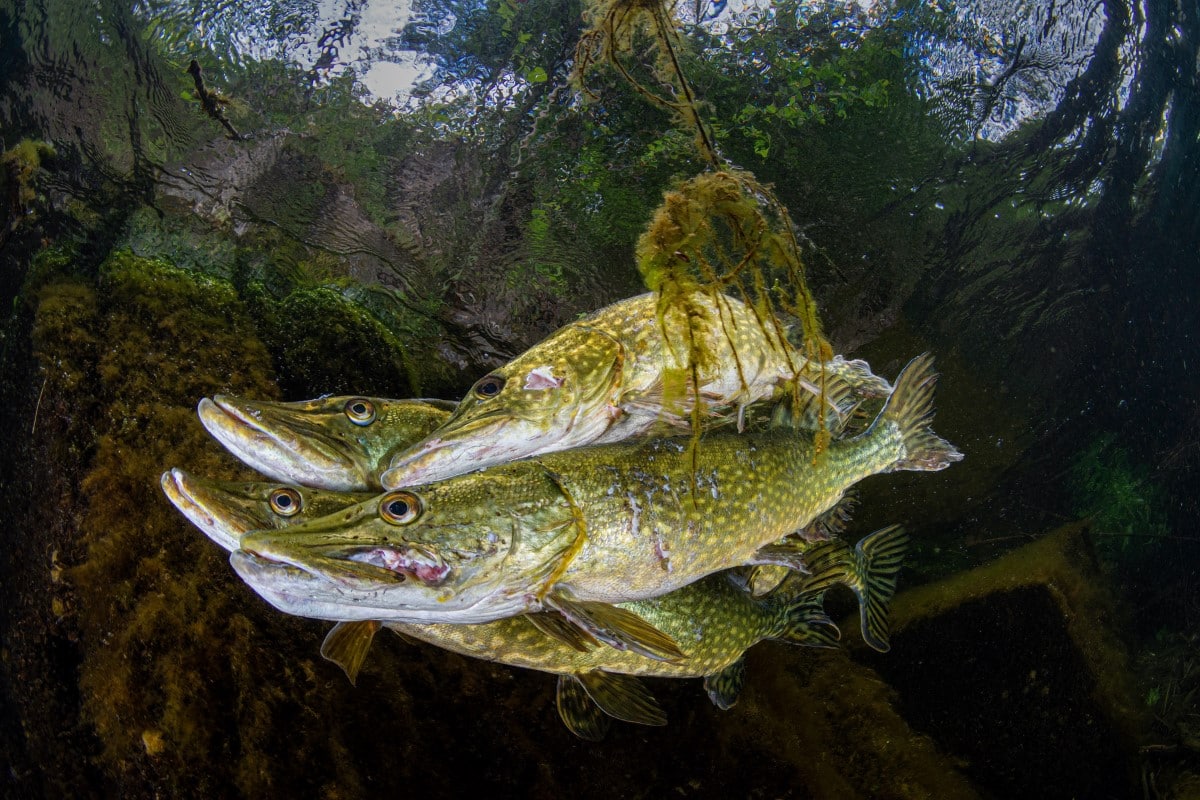

“Pike Courtship” by Robert Cuss. Animal Behavior | Runner-up.
Animal: Northern pike (Esox lucius)
Location: Stoney Cove, Leicestershire, England
“This photo was taken on a dive aimed at finding breeding pike in a quarry. I came across a group of six pikes, two of which moved off, leaving this group of four—three males and a female (furthest from view). During courtship, the males are oblivious to divers so it was possible to get close to them and take a series of pictures, even with a fisheye lens. It is uncommon to find pike in such shallow water, with the males cornering the female to get her to spawn.”
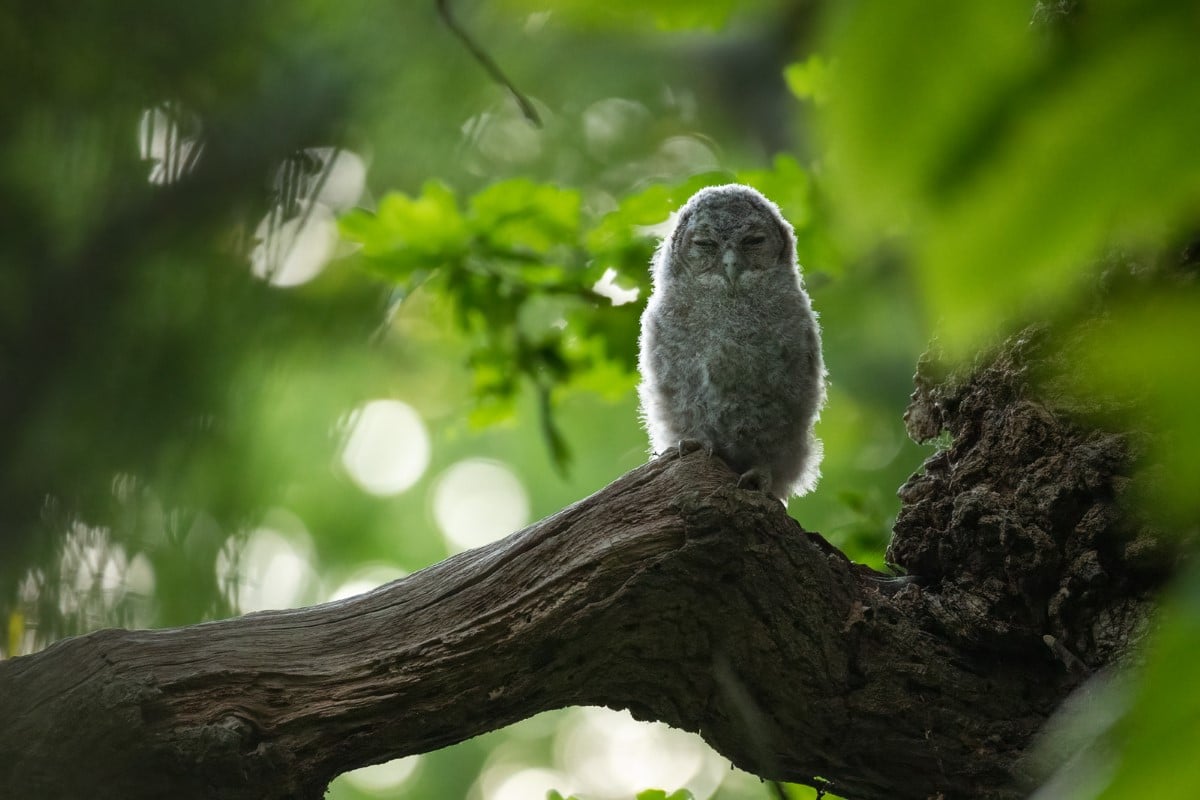

“Branching Out” by Billy Evans-Freke.
RSPB Young British Wildlife Photographer of the Year 2023 and 15-17 Years Winner
Animal: Tawny owl (Strix aluco)
Location: East Sussex, England
“I was sitting outside when I heard some blackbirds going mental in the woodland next to my house. I went in to have a look, as I knew that meant there was a tawny owl out and about. Whilst searching for this elusive owl, however, I heard a high-pitched squeak. My heart leaped into action as I knew that this meant that somewhere nearby was a tawny owlet! After ten minutes or so, I got closer to the owlet but still hadn’t spotted it. Then I suddenly caught a white ball of fluff in the corner of my eye. I maneuvered myself into a better position so that I had a nicer background and started taking shots.”
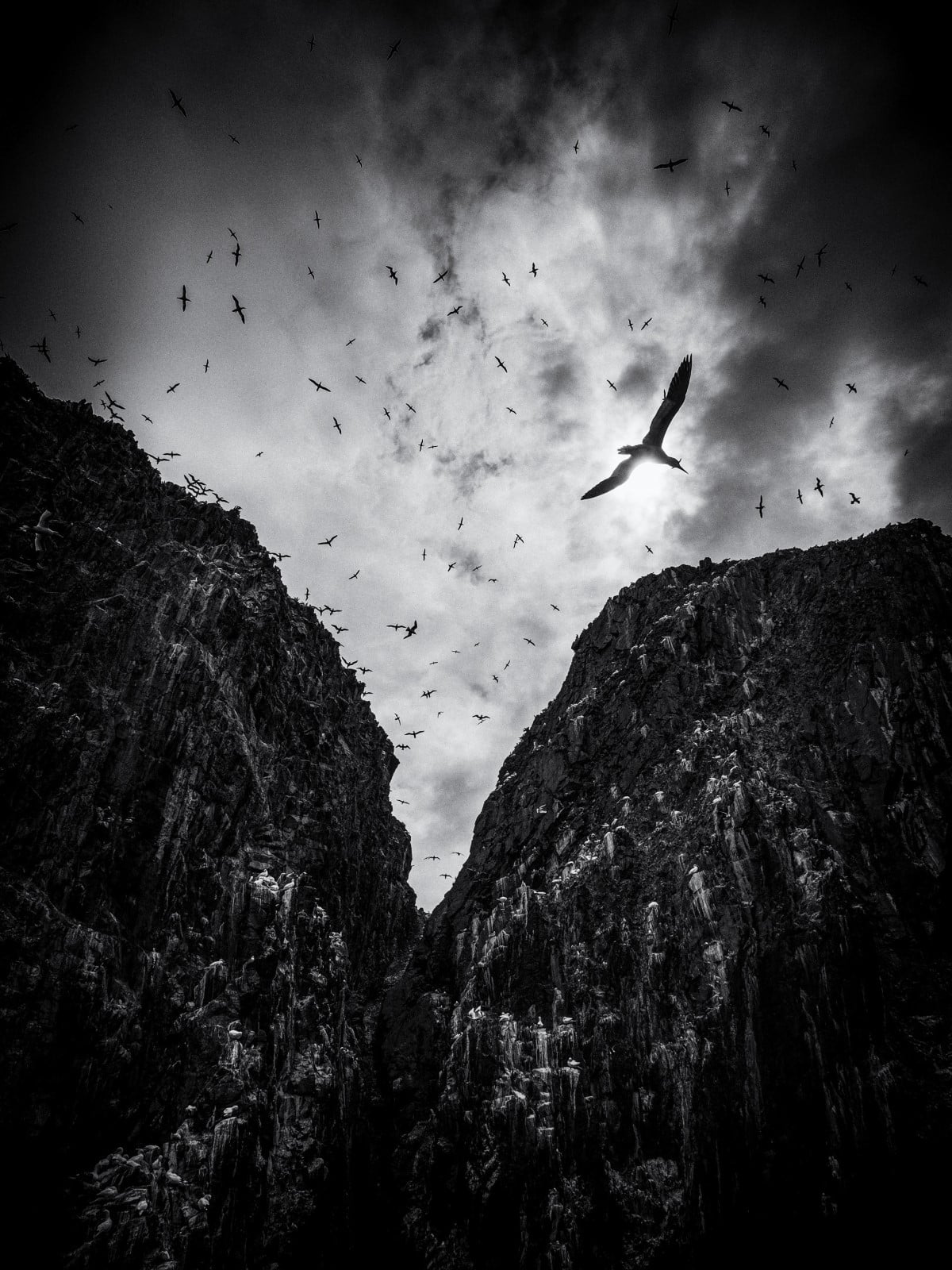

“Soaring” by Paula Cooper. Black & White | Runner-up-
Animal: Gannet (Morus bassanus)
Location: Bass Rock, Scotland
“I took this image from a boat trip to Bass rock, looking up at the towering cliffs and the gannets soaring above it. I wanted to show the drama of the place so converted it to black and white and darkened the image. I had been lucky enough to also land on the island a few days before and had been able to photograph this huge breeding population of gannets close up, which have been totally devastated this year by avian flu hitting the island.”
British Wildlife Photography Awards: Website | Facebook | Instagram
My Modern Met granted permission to feature photos by BWPA.
Related Articles:
Photography Contest Honors the Incredible Wildlife at Kenya’s Maasai Mara
Here Are the Incredible Winners of the 2022 World Nature Photography Awards
Comedy Wildlife Photography Awards Is Taking Hilarious Entries for 2022 Contest
Winners of British Ecological Society Photo Contest Celebrate the Diversity of Nature
https://platform.instagram.com/en_US/embeds.js
[ad_2]
Source link




GIPHY App Key not set. Please check settings